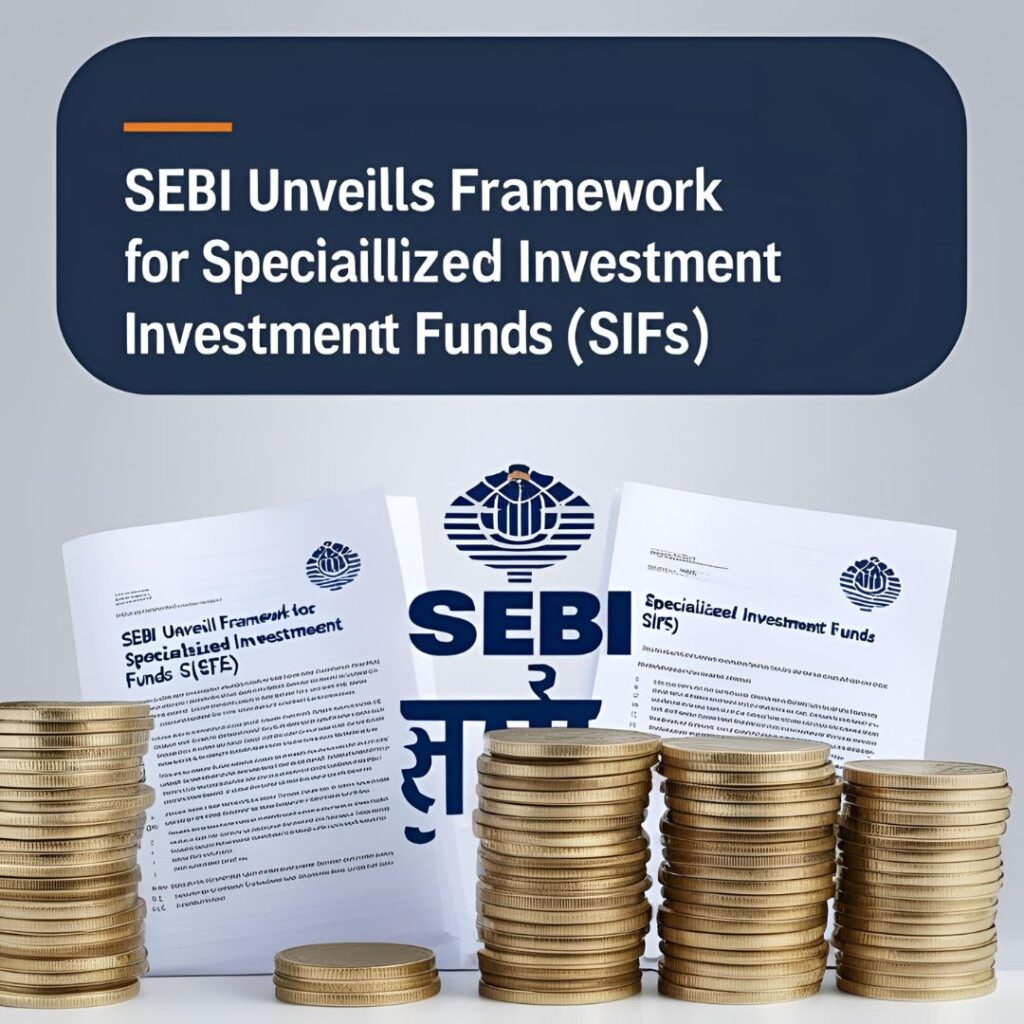Fit For Financials
Your Gateway to Smarter Investments.
SEBI introduces new rules for Specialized Investment Funds, set to influence investor participation and strategy.
Effective from April 1, 2025, the Securities and Exchange Board of India (SEBI) has introduced a comprehensive framework for Specialized Investment Funds (SIFs) to provide a new investment avenue that balances flexibility and regulation, bridging the gap between Mutual Funds (MFs) and Portfolio Management Services (PMS).

Minimum Investment Requirements
- Minimum investment of ₹10 lakh is mandatory across all SIF strategies.
- This minimum does not apply to accredited investors.
- Investments through SIP (Systematic Investment Plan), SWP (Systematic Withdrawal Plan), and STP (Systematic Transfer Plan) are permitted, but:
- The total investment must remain above ₹10 lakh.
- If the value drops below ₹10 lakh due to market movements, only full redemption of the remaining amount is allowed.
Debt Exposure Limits
- Exposure to a single company’s debt securities is capped at:
- 20% for AAA-rated instruments
- 16% for AA-rated instruments
- 12% for A-rated and below
- Investment in any single sector is restricted to a maximum of 25% of the fund’s Net Asset Value (NAV).
Eligibility Criteria for Mutual Funds to Launch SIFs
Registered mutual funds can launch an SIF via two routes:
Route 1: Track Record-Based
- AMC must be operational for at least 3 years.
- Should have an average AUM of ₹10,000 crore over the last 3 years.
- No regulatory actions initiated or taken against the sponsor or AMC in the past 3 years.
Route 2: Experienced Management-Based
- Appoint a Chief Investment Officer (CIO) with:
- At least 10 years of fund management experience
- Managed an average AUM of ₹5,000 crore
- Appoint an additional fund manager with:
- Minimum 3 years’ experience
- Managed an average AUM of ₹500 crore
- Same compliance history requirement as Route 1 (no action in past 3 years).
Operational Guidelines for SIFs
- AMC is permitted to share operational resources between the mutual fund and SIF.
- AMC must seek SEBI’s prior approval before launching an SIF.
- SIFs are allowed to:
- Take up to 25% exposure in derivatives for non-hedging purposes.
- Offset derivatives positions on the same security in certain conditions.
Fund Structure & Liquidity
- Subscription and redemption frequencies can differ across SIFs.
- Redemption may require a notice period of up to 15 working days.
- Closed-ended and interval funds must be listed on stock exchanges.
- Funds not offering daily redemption will be classified as Interval Investment Strategies.
Benchmarking & Risk Classification
- Funds will follow a single-tier benchmark system:
- E.g., Nifty 50, BSE 100 for equities
- Relevant indices for debt funds
- SEBI introduces five risk bands (Risk Band 1 to 5):
- Risk levels to be reviewed monthly
Distribution & Disclosure Norms
- Only certified distributors can sell SIFs to investors.
- Mandatory disclosures include:
- Portfolio details
- Liquidity risks
- Scenario analysis
- These must be updated regularly on the fund’s website
- All advertisements for SIFs must carry a standard risk disclaimer.
Conclusion
The introduction of Specialized Investment Funds offers a hybrid investment model, combining the flexibility of PMS with the regulatory safeguards of mutual funds. With minimum investment thresholds, structured risk limits, and detailed disclosure requirements, SEBI aims to foster transparency and innovation while protecting investor interests in this new investment vehicle.
Proudly powered by WordPress
